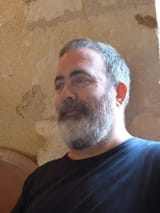Thérèse Brenet: Music of the Earth and the Cosmos
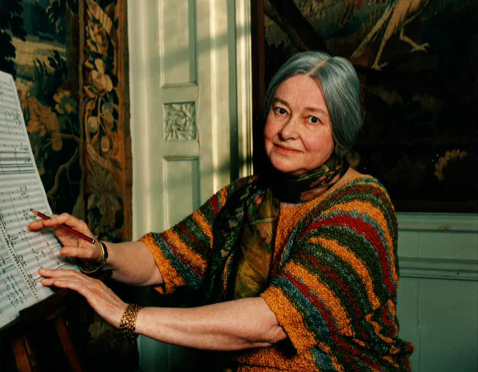
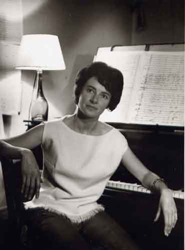
When I was a young man, just out of my initial degree in the US and suddenly accepted as student at the prestigious Paris Conservatory, I found myself confronted with the cultural enigma that was the French system of Solfeggio. As a player of a transposing instrument, I definitely did not have absolute pitch and the approach in the US system was radically different from what I was expected to know at the Conservatoire. Analysis was my forte and I did well in Alain Morgoni’s analysis class. But I never quite got the hang of French solfeggio. My teacher was the Prix de Rome from 1965 Thérèse Brenet, who amazed her class, mainly foreigners such as myself, with her virtuosity at improvising in all styles, from baroque music to more contemporary idioms. She tried to teach us the French system, but between myself and the other students (from all four corners of the planet, with probably as many solfeggio systems as there were nationalities!) and the fact that we were clearly all too old to learn absolute pitch (or the ability to know the names of the notes simply by hearing them), it was mainly a thankless task.
One day, I happened to be all alone for my weekly lesson and Madame Brenet sat me down and said “you were a very talented musician, one of the most cultivated I’ve ever had as a student, but you are simply too old to learn this system. If you had started when you were a young child, you would have had no problems but it’s simply too late for you. Why don’t we ignore this business and talk about music?”. So began a musical relationship that has lasted to the present day, and has, I hope, allowed us to come to understand our respective musical Worlds, which have been increasingly intertwined as the years have gone past.
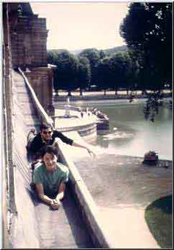
Madame Brenet, although she has only lived in France other than her time at the Villa Medicis in Rome and studies in Poland, is extremely curious to know about countries far away and their culture, which is why she had so many foreign students – indeed, the other teachers were more than happy to give her these students because they were more difficult to teach than the French students! She asked me to introduce her to what the younger American composers were writing and I gave her a cassette of “Glassworks”, by Philip Glass, which shocked her greatly. When she returned it, she told me that she thought that Mr. Glass must have listened to too much Rock Music! She told me about her studies in the composition class that Jean Rivier and Darius Milhaud shared, where Milhaud allowed them to freely explore their own methods of expression. Later, she explained how Lutoslawski had influenced her greatly when she studied under him in Poland after her time at the Villa Medicis, through his use of aleatoric pitch as well as use of such things as spoken text. We spent many hours discussing the music of the past and the music she was writing at the time, including a guitar concerto for my friend Nicolas Courtin.
After I finished my studies, I had only sporadic contact with my old teacher. In the early 1990s, the Ballet master of the Riga Opera wanted to commission a French composer to write a ballet on “Madame Bovary”. I called Miss Brenet and although she declined the commission, she did put me in contact with the late Patricia Adkins Chiti, who introduced me to a wide variety of composers and with whom I worked for several decades. In trying to promote these works, it quickly became apparent to me that I needed to start publishing this music and so my publishing house was born. So, it was through the actions of my old professor that I had so many enriching experiences.
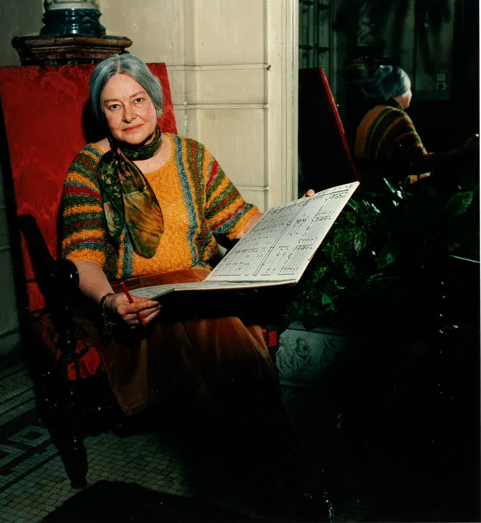
It was in 2003 that our paths crossed again, for the première of Miss Brenet’s monumental work for Concert Band “(5523) Luminet 1991 PH8” named for an asteroid that had been named for the French Astrophysician Jean-Pierre Luminet, who shares with Ms Brenet both a love of music and the Cosmos. The work was performed in the largest Baroque Church in Paris, Saint Roch, with the Concert Band of the French Air Force under their conductor Claude Pichereau. This colorful piece for large ensemble of winds, brass and percussion depicts the asteroid as one approaches, surveys it and then flies past with the object going into the depth of Space, illustrated by the music continuing in an endless decrescendo, as if the piece was still being performed in some part of the Universe. The work had an effect of a thunderbolt on my ears and I found this same “timeless” quality in many other works, such as “Le Livre de L’Harmonie de Monde”, “De Rerum Natura” and “Siderales”. Rarely has the immensity of Space been so directly expressed through Music. It is fitting that Dr. Luminet will include a chapter on Thérèse Brenet’s music in the his new book about Music and Science, due out without the next few weeks.
So began almost two decades of work, engraving and correcting score, organising concerts and recordings and also corresponding with a large number of people interested in the music of this singular French creator. Thérèse Brenet has written about 80 works, many of which are inspired by Space, but also by poetry (she has a fondness for Edgar Alan Poe, so works like “Nevermore” for solo piano, or “Only Thine Eyes Remained” for Violin or Flute and orchestra figure prominently). Thérèse’s sister Antoinette was a professor of Classics, so many of the works are inspired by Greek and Latin texts, or even the works of Arabic mystics. Since neither of the sisters married, they lived their entire lives in their family home in the fashionable 16th district of Paris. Antoinette was so intertwined with Thérèse’s creativity that Thérèse has not written a note of music since Antoinette’s death a few years ago. “Lynx”, Madame Brenet’s last original piece (there was later Sonata for Flute and Piano, which was adapted from a pre-existing Concerto for Flute and strings) was written for the duo of Katharine Rawdon and Raj Bhimani. Ms Rawdon, a noted flute soloist and flute teacher describes this work:
“The piece “Lynx”, which she wrote for Raj and I is only 3-4 minutes, but contains so much—a sort of reaching to the stars (her metaphysical bent) and also deeply stirring, even wild passages, where the harmony and “colour” goes far beyond your typical French flute and piano piece. In my own opinion, it even surpasses the Dutilleux Sonatine… While not being “easy” music, it is basically very classical, restrained, structured… moving and deep and passionate.”
Thérèse Brenet has worked with a large number of noted performers, including such important virtuosi as Dense Mégevan and Christan Schneider, both essential for establishing their instruments (Celtic Harp and Mandoline, respectively) into the French Musical Establishment. Oddly, for someone who studied the piano as a child, Thérèse Brenet composed for a very long time before writing for the piano. In 2000, she began a series of works for the American pianist Raj Bhimani. Mr. Bhimani describes how these works came to be written:
“By 1999 I had already known Thérèse Brenet for many years and had been on the receiving end of boundless generosity from her and her sister Antoinette. They received me into their home in Paris and allowed me to practice on the Pleyel grand piano in their salon for as many hours as I wanted whenever I was in town. During that period I spent about 6 weeks each year in France, so this added up to a significant amount of time. When pondering how I could repay so much generosity I realised that a small start would be to learn and perform the only piece Thérèse had written for piano: her left-hand etude, Océanides. I’d heard the piece and knew I’d liked it immediately. What I wasn’t expecting was to uncover layers and layers of meaning in this masterpiece. The rich and colourful harmonic language, the brilliant originality of the piano writing, and the deep expressiveness of the piece completely bowled me over. To this day it’s one of my favourite pieces to perform in public.
I sat down at the Pleyel in the spring of 2000 to play the piece for Thérèse. I don’t know which one of us was more apprehensive. We were already so fond of each other personally that any disappointment in my performance would have been difficult for both of us to bear. After finishing the piece I saw her wipe away a tear. My public performance of the piece took place a few days later. She was in attendance and was able to hear the appreciation of the audience. We met the following day for a bottle of champagne to celebrate, and I remarked that the only sad part of this occasion was that there were no other works of hers for me to learn. She responded immediately that she’d write something for me. A couple months later she retired from teaching at the Paris Conservatoire and dove right into “my” piece, To the West Wind. The main gestures of the piece came to her quickly, and by the end of the summer she’d put the piece in the mail. To say I was overwhelmed by the scope and quality of this work intended for me would be an understatement. The work is in three movements, moving from large, dramatic gestures to intimate, expressive moments. It’s a brilliant work filled with her distinctive harmonies and a well-informed use of the instrument. The disparate motivic elements are all sewn together in the tumultuous finale of the work.
I had a conversation with Thérèse’s sister afterward, wondering why someone who writes so well for the piano hadn’t written more music for her first instrument. It seems one of her early teachers had made time at the piano so unpleasant that Thérèse no longer wanted to spend time there afterward. But finally the door was open, and since that first piece she’s written 3 more solo works for me, a fantastic work for flute and piano that I perform with a dear colleague, and other works involving piano. I’ve had the opportunity to play these pieces in numerous places around the world. Thérèse keeps posters and programs from these concerts on the walls of her studio. I continue to perform these pieces anywhere I can, offering the opportunity for more people to discover the voice of this accomplished composer.”
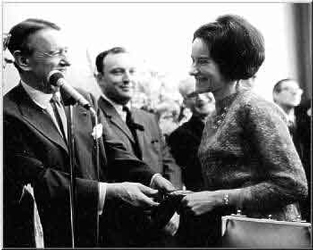
Thérèse Brenet writes music that is not of the past, nor is it meant for the future. In a sense, it is “out of Time”, in the sense that her music is firmly rooted in the French tradition (with very strong echos of Debussy in certain orchestral works) but also with a strong sense of originality which comes out of her personal vision of the World and the Universe. One day, I had the privilege of assisting Ms Brenet in an interview with an American musicologist, serving as translator. When the interviewer asked Madame Brenet why she wrote music, her face lit up and she said very calmly and simply “My music is a form of prayer.” So, one might conclude that Thérèse Brenet is writing not for Time but for Eternity, which is why so many of her works end without a final double line at the end of the score, implying that the music continues somewhere. The harmonic language of her music is firmly rooted in the natural properties of sound itself, with a great amount of effects in her orchestrations which are the direct result of using the acoustical properties of the notes themselves. So, while her mind is in the stars, her feet are firmly planted on the Earth itself. Her later works have become increasingly concentrated, rarely being longer than a few minutes per movement, as if it was not necessary to belabour her point when dealing with things which are so essential to Sound itself.
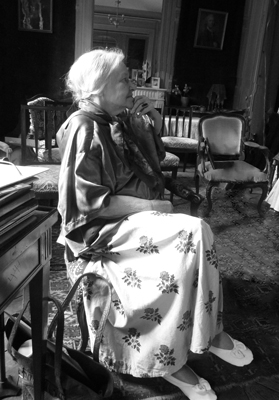
A few years ago, I spent an afternoon visiting with Thérèse Brenet in her studio and she showed me a suitcase full of mementos that she had put together which marked special moments of her life. There were the Prize medals that she had won over the years, the portrait in Bronze that a colleague at the French Rome Academy had done of her, and other important official awards. But what she most wanted to show me was what she described as her “most treasured possession”. When she was a young woman, she had a dispute with her father (as often happens in families) with what she was going to do after her studies ended. Her father insisted that she take the job that she had been offered at the Paris Conservatory to teach solfeggio, but as an energetic young woman, she wanted none of that. She decided to take lessons to drive long-haul trucks and buses and ended up passing her exams with flying colours! Her intention was to drive tourist buses and travel around Europe. Reason prevailed, but this over-the-road driving license is a memento of this wish to travel as a Free Spirit without constraints. Off to the Conservatoire she went, where she met me and many other musicians who perform her music in the far places she dreamed of visiting.
Finally, it is her music that travels for her, through the performances of her closest colleagues who take her music out into the World and, as she hopes, into the Universe itself to sound endlessly among the stars. The great questions of Science can also lead to poetic reflections, and it is often more interesting to consider the enigmas, rather than try to define them. Thérèse Brenet’s musical works do not seek answers, but rather a prolongation of the act of asking the questions. As she herself writes regarding her Double Concerto for viola, violoncello and orchestra CES HAUTES MÉLODIES DANS LE PARADIS QUE NOUS AVONS PERDU (“These High Melodies in the Paradis that We Have Lost”):
“I was writing the last pages of this work while I was visited at my home in Paris by my friend the German music critic Carl Alexis who is also an excellent pianist. I showed him my score and told him that I was unable to write an analysis of this work myself, inspite of having just finished writing it. I had hoped that he would offer to write this analysis for me. He sightread the playable passages in a brilliant manner and read those passages which could not be performed on the piano with his usual clear musical understanding. Then, thoughtfully, he said something close to this:
“The irrationality of Art, with its blindly surprising turns, its unpredictable discoveries, all of this is part of its magic.”
He stopped and said:
“No, don’t write an analysis. There is such an osmosis between the titles that you have chosen and your music that an analysis would be counterproductive.”
He went to my worktable and wrote this:
“Man goes beyond Space and Time into another World in which he can explore the infinite cycles of beauty, love and grace.”
He got up and gave me his paper, saying warmly “Here is your analysis”.
The music of Thérèse Brenet invites the listener to enter her own temporal space and experience her vision of the Universe by traveling through her personal soundscape. In order to experience this, one only has to explore her music.

